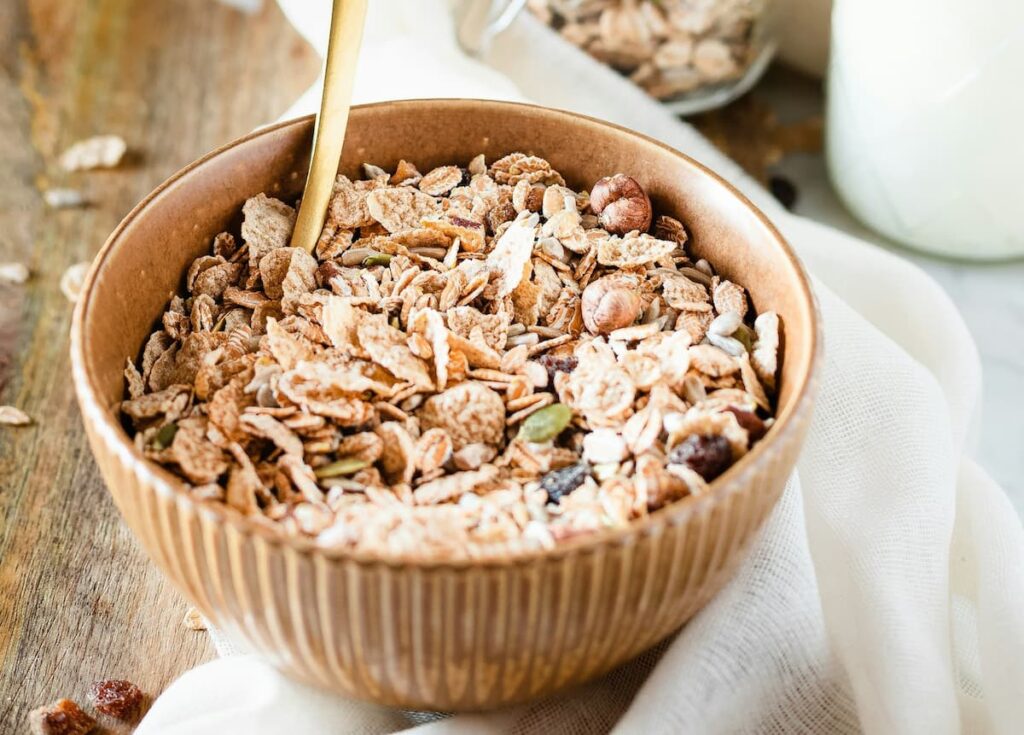Building defined, strong abs is a goal for many fitness enthusiasts, and achieving those coveted “jacked abs” requires a combination of targeted exercises, nutrition, and recovery strategies. However, getting there faster means working smarter, not just harder.
Below are five scientifically-backed tricks that will help you on your journey to achieving well-defined abs more quickly.
1. Prioritise Progressive Overload in Core Training
What is Progressive Overload?
Progressive overload is a fundamental principle in strength training. It involves gradually increasing the stress placed on your muscles during exercise to encourage growth and adaptation. When it comes to training your abs, many people stick to bodyweight exercises like crunches or sit-ups, never pushing their muscles to do more than they’re capable of.
Why It Works:
Research shows that progressive overload is essential for muscle hypertrophy (muscle growth) and improved strength. By increasing the resistance or intensity of your core exercises over time, you force your abdominal muscles to adapt, growing stronger and more defined (Schoenfeld, 2010). Adding weight to ab exercises such as weighted sit-ups, cable crunches, or hanging leg raises will recruit more muscle fibres, resulting in faster and more noticeable gains.
How to Implement:
Start by incorporating resistance bands, cables, or dumbbells into your ab workouts. For example, perform cable crunches or use a dumbbell during Russian twists. Aim for moderate repetitions (8–15 per set) with progressive increases in resistance. Adjust the weight so that the last few reps of each set are challenging but maintain good form.
2. Emphasise Compound Movements for Total Core Engagement
What Are Compound Movements?
Compound exercises target multiple muscle groups simultaneously. Exercises like deadlifts, squats, and overhead presses not only train your larger muscle groups but also engage the core significantly. Unlike isolated ab exercises, compound lifts challenge your core stabilisation and contribute to overall abdominal strength and definition.
Why It Works:
Studies have shown that compound lifts result in high levels of core muscle activation due to the demand placed on your torso to stabilise your body (Escamilla et al., 2002). Exercises like deadlifts and squats recruit the rectus abdominis, transverse abdominis, and obliques, ensuring they get worked even on non-core days.
How to Implement:
Add compound exercises such as deadlifts, squats, and overhead presses to your routine, aiming for 3–4 sets of 5–10 repetitions. Focus on maintaining good form, particularly the engagement of your core during these movements. Remember that a strong core will not only give you better abs but also improve your overall performance in these lifts.
3. Incorporate High-Intensity Interval Training (HIIT) for Fat Loss
What is HIIT?
High-intensity interval training (HIIT) alternates between short bursts of high-intensity effort and periods of low-intensity recovery or rest. It has gained popularity not only for its cardiovascular benefits but also for its effectiveness in burning fat while preserving lean muscle.

Why It Works for Abs:
Visible abs are primarily a result of low body fat levels. You can have a strong core, but if it’s hidden beneath a layer of fat, your abs won’t be visible. A study by Boutcher (2011) found that HIIT training is highly effective at reducing abdominal fat due to its ability to elevate metabolism and increase fat oxidation. Since HIIT is also less time-consuming than steady-state cardio, it’s an efficient method to decrease overall body fat, helping your abs show through faster.
How to Implement:
Incorporate HIIT workouts into your routine 2–3 times per week. You can do HIIT with a variety of exercises such as sprinting, cycling, or bodyweight movements like burpees or mountain climbers. A typical session may include 20 seconds of all-out effort followed by 40 seconds of rest, repeated for 15–20 minutes. Combining HIIT with a consistent strength training regimen will expedite fat loss, helping to reveal your abs more quickly.
4. Optimise Nutrition with a Caloric Deficit and Protein Focus
Why Nutrition Matters:
You can train your abs as hard as you want, but if your nutrition isn’t in check, you won’t see the results. To get jacked abs, reducing body fat is key, and that requires consuming fewer calories than your body burns—a state known as a caloric deficit. But it’s not just about cutting calories; the type of calories you consume is equally important.

Why It Works:
Research shows that protein is vital in preserving muscle mass during a caloric deficit (Layman et al., 2005). Protein not only supports muscle repair and growth but also increases satiety, helping to manage hunger when you’re cutting calories. Furthermore, a study by Phillips et al. (2012) highlighted that a higher protein intake is associated with better fat loss outcomes while retaining muscle mass.
How to Implement:
Determine your caloric maintenance level (the number of calories you need to maintain your current weight), and aim to consume 10–20% fewer calories to establish a deficit. Ensure you’re getting at least 1.6–2.2 grams of protein per kilogram of body weight daily to support muscle growth and retention. Prioritise lean protein sources like chicken, turkey, fish, and plant-based options. Complement your diet with whole grains, fruits, vegetables, and healthy fats to support overall health and energy levels.
5. Focus on Rest, Recovery, and Stress Management
Why Recovery Matters:
It’s easy to overlook the role that recovery plays in getting jacked abs. Abdominal muscles, like any other muscle group, need time to recover after intense training. Overtraining can lead to muscle fatigue and injury, both of which will slow your progress. Furthermore, chronic stress and poor sleep can increase levels of cortisol, a hormone associated with fat storage, particularly around the midsection.
 Source: Artem Kovalev on Unsplash
Source: Artem Kovalev on UnsplashWhy It Works:
A study by Moreschi et al. (2019) found that sleep deprivation impairs muscle recovery and increases cortisol levels, which can hinder fat loss and muscle growth. In addition, another study demonstrated the positive effects of managing stress and ensuring adequate sleep on overall body composition (Grandner et al., 2014).
How to Implement:
Prioritise getting 7–9 hours of quality sleep each night to aid in recovery and hormone regulation. Schedule rest days for your abs, as training them every day can lead to overuse and slower progress. Implement relaxation techniques such as meditation, yoga, or breathing exercises to manage stress and support better recovery. Lower stress levels and improved sleep will enhance your body’s ability to recover and promote fat loss, helping to bring out those jacked abs faster.
Conclusion
Getting jacked abs is not just about doing hundreds of crunches. A combination of strength training, proper nutrition, and recovery strategies is key. Progressive overload, compound movements, HIIT, a solid nutrition plan, and adequate recovery are all scientifically-proven ways to get you to your goal faster. Incorporating these tricks into your routine will ensure you’re working smart, maximising your efforts, and seeing results more quickly.
Key Takeaways
| Trick | Benefit |
|---|---|
| Progressive Overload in Core Training | Increases core strength and muscle definition through gradual resistance increases. |
| Compound Movements | Engages the core during major lifts, promoting overall abdominal strength. |
| High-Intensity Interval Training (HIIT) | Enhances fat loss, allowing abs to become more visible in a shorter timeframe. |
| Caloric Deficit and Protein Intake | Supports fat loss while preserving muscle mass, crucial for defined abs. |
| Rest and Stress Management | Promotes recovery, fat loss, and muscle growth through better sleep and lower stress. |
References
Boutcher, S.H., 2011. High-intensity intermittent exercise and fat loss. Journal of Obesity, [online] Available at: https://doi.org/10.1155/2011/868305 [Accessed 24 Sep. 2024].
Escamilla, R.F., Francisco, A.C., Fleisig, G.S., Barrentine, S.W., Welch, C.M., Kayes, A.V., Speer, K.P. and Andrews, J.R., 2002. A three-dimensional biomechanical analysis of sumo and conventional style deadlifts. Medicine and Science in Sports and Exercise, 34(4), pp.682–688.
Grandner, M.A., Jackson, N., Gerstner, J.R. and Knutson, K.L., 2014. Sleep symptoms associated with intake of specific dietary nutrients. Journal of Sleep Research, 23(1), pp.22–34.
Layman, D.K., Evans, E., Baum, J.I., Seyler, J., Erickson, D.J. and Boileau, R.A., 2005. Dietary protein and exercise have additive effects on body composition during weight loss in adult women. Journal of Nutrition, 135(8), pp.1903–1910.
Moreschi, J.M., Brentano, M.A., Silva, R.A., and Delevatti, R.S., 2019. Sleep deprivation and cortisol levels. Sleep Science, 12(3), pp.174–179.
Phillips, S.M., Chevalier, S. and Leidy, H.J., 2016. Protein requirements beyond the RDA: implications for optimizing health. American Journal of Clinical Nutrition, 104(6), pp.1584S-1588S.






